Hanwha Vision Multi-sensor Cameras
Hanwha Vision Multi-sensor cameras typically combine multiple image sensors in a single unit, allowing for a broader field of view and improved situational awareness compared to single-sensor cameras. These cameras are often used in surveillance and security applications where monitoring large areas is essential.
Key features of Hanwha Vision Multi-sensor Security Cameras
- Multiple Image Sensors: Hanwha Vision Multi-sensor cameras, as the name suggests, incorporate more than one image sensor within a single housing. The number of sensors can vary, but it's common to have two, three, or more sensors.
- Field of View (FOV): The use of multiple sensors allows for a wider field of view, enabling the camera to cover larger areas without compromising image quality.
- Panoramic Views: Hanwha Vision Multi-sensor cameras are capable of providing panoramic or 180 to 360-degree views, minimizing blind spots and enhancing overall surveillance coverage.
- Resolution: The combined resolution of all sensors contributes to the overall image resolution. Higher resolution can provide clearer and more detailed images, which is essential for surveillance purposes.
- Low-Light Performance: Many multi-sensor cameras are equipped with features such as infrared (IR) illumination or low-light sensors to ensure effective surveillance in challenging lighting conditions.
- Image Stitching: The camera's software may include image stitching capabilities, combining the output from multiple sensors seamlessly to create a cohesive and comprehensive image.
- Analytics and Intelligent Features: Some multi-sensor cameras come with built-in analytics and intelligent features, such as motion detection, object tracking, and people counting, to enhance their functionality.
- Flexible Mounting Options: These cameras often have adjustable and flexible mounting options, allowing for installation in various environments and orientations.
- Network Connectivity: Hanwha Vision Multi-sensor cameras typically support network connectivity, enabling remote monitoring and control. They may use protocols like ONVIF (Open Network Video Interface Forum) for interoperability with other surveillance devices.
- Weather Resistance: Many multi-sensor cameras are designed to be weather-resistant or even vandal-resistant, making them suitable for outdoor and harsh environments.
-

Samsung Hanwha PNM-C12083RVD 2x6MP Night Vision Outdoor Multi-sensor IP Security Camera
Brand: Hanwha Vision
Part Number: PNM-C12083RVD$2,050.00$1,553.18- Compression : H.265, H.264, MJPEG,
- Field of View (Horizontal) : 95.08°Field of View 47.64°Field of View
- Max. FPS and Resolution : 15fps at 3328 x 1872
- Lens Type : Motorized (Automatic Zoom) Lens
- Lens Size : 3.54~6.69mm Lens
- Sensor Type : CMOS
- Sensor Size : 1/2.8" Sensor
- Protection Code : IP66 IK10 NEMA 4X
- Color : White
- Material : Aluminum
- Environmental : Outdoor
- Aperture : F1.67 F2.64
$2,050.00$1,553.18 -

Samsung Hanwha PNM-9085RQZ1 4x 5MP Outdoor Multi-sensor PTRZ IP Security Camera with Night Vision
Brand: Hanwha Vision
Part Number: PNM-9085RQZ1$3,800.00$2,783.06- Compression : H.265, H.264, MJPEG,
- Field of View (Horizontal) : 87.58°Field of View 37°Field of View
- Max. FPS and Resolution : 30fps at 5MP
- Lens Type : Motorized (Automatic Zoom) Lens
- Lens Size : 4.13~9.4mm Lens
- Sensor Type : CMOS
- Sensor Size : 1/1.8" Sensor
- Max. Storage Capacity : 256 GB Storage Capacity
- Protection Code : IP66 IK10 NEMA 4X
- Color : White
- Material : Aluminum
- Environmental : Outdoor
- Aperture : F1.92 F2.67
$3,800.00$2,783.06 -

Samsung Hanwha PNM-9031RV 4x 5MP Outdoor Multi-sensor IP Security Camera with Night Vision, H.265
Brand: Hanwha Vision
Part Number: PNM-9031RV$2,700.00$2,045.46- Field of View (Horizontal) : 192°Field of View
- Lens Type : Fixed Lens
- Sensor Type : CMOS
- Sensor Size : 1/2.8" Sensor
- Protection Code : IP66 IK10 NEMA 4X
- Environmental : Outdoor
$2,700.00$2,045.46 -
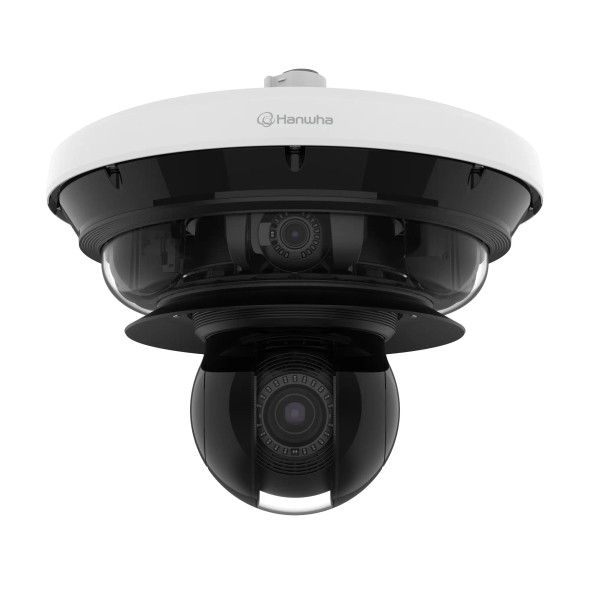
Samsung Hanwha PNM-C34404RQPZ 4K 4Ch PTRZ + 2MP 40x PTZ AI Camera
Brand: Hanwha Vision
Part Number: PNM-C34404RQPZ$7,600.00$5,565.58- Compression : H.264, H.265,
- Lens Type : Varifocal Lens Motorized (Automatic Zoom) Lens
- Lens Size : 3.2~5.7mm Lens 4.25~170mm Lens
- Sensor Type : CMOS
- Protection Code : IP66 IK10 NEMA 4X
$7,600.00$5,565.58 -

Samsung Hanwha PNM-9084QZ1 4x 2MP Outdoor Multi-sensor PTRZ IP Security Camera
Brand: Hanwha Vision
Part Number: PNM-9084QZ1$2,200.00$1,666.64- Compression : H.265, H.264, MJPEG,
- Field of View (Horizontal) : 107°Field of View 56.3°Field of View
- Max. FPS and Resolution : 60fps at 1080P
- Lens Type : Motorized (Automatic Zoom) Lens
- Lens Size : 3~6mm Lens
- Sensor Type : CMOS
- Sensor Size : 1/2.8" Sensor
- Max. Storage Capacity : 1 TB Storage Capacity
- Protection Code : IP66 IK10 NEMA 4X
- Environmental : Outdoor
- Aperture : F2.2 F3.1
$2,200.00$1,666.64 -

Samsung Hanwha PNM-9000VD 2x 5MP Multi-sensor Multi-directional IP Security Camera - No Lens included
Brand: Hanwha Vision
Part Number: PNM-9000VD$1,100.00$861.99- Compression : H.265,
- Lens Type : No Lens
- Sensor Type : CMOS
- Sensor Size : 1/1.8" Sensor
- Direction : Multi-directional
- Protection Code : IP66
- Environmental : Outdoor
$1,100.00$861.99 -

Samsung Hanwha PNM-12082RVD 6MP Outdoor Multi-sensor IP Security Camera
Brand: Hanwha Vision
Part Number: PNM-12082RVD$1,700.00$1,289.41- Compression : H.264, H.265, MJPEG,
- Field of View (Horizontal) : 47°Field of View 96°Field of View
- Max. FPS and Resolution : 15fps at 3328 x 1872
- Lens Type : Motorized (Automatic Zoom) Lens
- Lens Size : 3.54~6.69mm Lens
- Sensor Type : CMOS
- Sensor Size : 1/2.8" Sensor
- Protection Code : IP67 IK10 NEMA 4X
- Material : Aluminum
- Environmental : Outdoor
- Aperture : F1.67 F2.64
$1,700.00$1,289.41 -

Samsung Hanwha PNM-C7083RVD 2MP Night Vision Outdoor Multi-sensor IP Security Camera
Brand: Hanwha Vision
Part Number: PNM-C7083RVD$1,750.00$1,325.76- Compression : H.265, H.264, MJPEG,
- Field of View (Horizontal) : 56.3°Field of View 107°Field of View
- Max. FPS and Resolution : 30fps at 1080P
- Lens Type : Motorized (Automatic Zoom) Lens
- Lens Size : 3~6mm Lens
- Sensor Type : CMOS
- Sensor Size : 1/2.8" Sensor
- Protection Code : IP67 IK10 NEMA 4X
- Color : White
- Material : Aluminum
- Environmental : Outdoor
- Aperture : F2.2 F3.1
$1,750.00$1,325.76 -
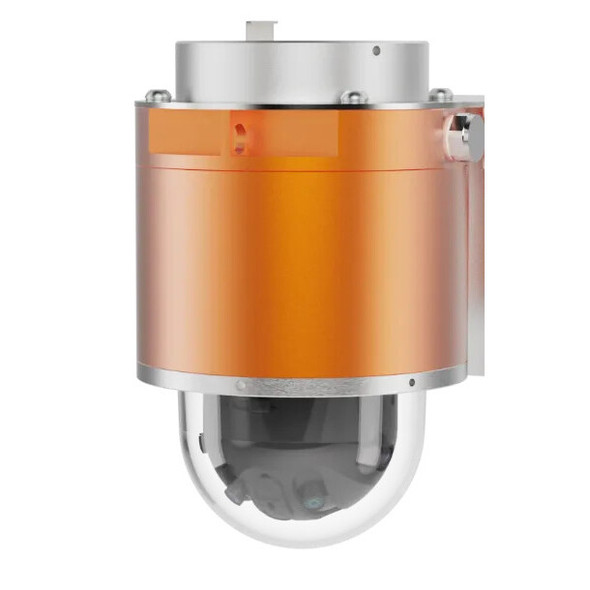
Samsung Hanwha TNM-P9022EPT3-Z 2MPx4 Outdoor Explosion-Proof Multi-sensor IP Security Camera
Brand: Hanwha Vision
Part Number: TNM-P9022EPT3-Z$14,500.00$10,618.69- Compression : H.265, H.264, MJPEG,
- Field of View (Horizontal) : 209°Field of View
- Max. FPS and Resolution : 30fps at 4608 x 1800
- Lens Type : Fixed Lens
- Lens Size : 2.8mm Lens
- Sensor Type : CMOS
- Sensor Size : 1/2.8" Sensor
- Video Output : 1x Micro USB Type B
- Max. Storage Capacity : 1 TB Storage Capacity
- Protection Code : IP66 IP67
- Color : Orange
- Material : Aluminum
- Environmental : Outdoor
- Aperture : F1.6
$14,500.00$10,618.69 -

Samsung Hanwha PNM-8082VT 3x2MP Outdoor Multi-sensor IP Security Camera
Brand: Hanwha Vision
Part Number: PNM-8082VT$1,700.00$1,287.87- Compression : H.265, H.264, MJPEG,
- Field of View (Horizontal) : 107°Field of View 56.3°Field of View
- Max. FPS and Resolution : 30fps at 1080P
- Lens Type : Motorized (Automatic Zoom) Lens
- Lens Size : 3~6mm Lens
- Sensor Type : CMOS
- Sensor Size : 1/2.8" Sensor
- Video Output : 1x CVBS
- Protection Code : IP66 IK10 NEMA 4X
- Color : White
- Material : Aluminum
- Environmental : Outdoor
- Aperture : F2.2 F3.1
$1,700.00$1,287.87 -

Samsung Hanwha PNM-9002VQ Outdoor Multi-sensor IP Security Camera, Lens Not Included
Brand: Hanwha Vision
Part Number: PNM-9002VQ$1,700.00$1,287.87- Compression : H.265, H.264, MJPEG,
- Video Output : 1x CVBS
- Protection Code : IP66 IK10
- Material : Aluminum
- Environmental : Outdoor
$1,700.00$1,287.87 -
New Product!

Hanwha Vision PNM-C20000QB 4x2MP Indoor Multi-sensor IP Security Camera
Brand: Hanwha Vision
Part Number: PNM-C20000QB$1,300.00$953.55- Compression : MJPEG, H.265, H.264,
- Color : Black
- Material : Plastic
$1,300.00$953.55 -

Hanwha Vision PNM-C32084RQZ 4x8MP Outdoor Multi-Directional Dome IP Security Camera with 4.38-9.33mm and Built-In IR
Brand: Hanwha Vision
Part Number: PNM-C32084RQZ$5,800.00$4,247.48- Compression : H.264, H.265, MJPEG,
- Lens Size : 4.38~9.33mm Lens
- Sensor Type : CMOS
- Sensor Size : 1/1.8" Sensor
- Protection Code : IP66 IK10 NEMA 4X NEMA-TS 2
- Environmental : Outdoor
- Aperture : F1.3 F2.15
$5,800.00$4,247.48 -

Hanwha Vision PNM-C32083RQZ 4x8MP Outdoor Multi-Directional Dome IP Security Camera with 4.38-9.33mm Motorized Lenses and Built-In IR
Brand: Hanwha Vision
Part Number: PNM-C32083RQZ$3,900.00$2,856.06- Compression : H.265, H.264, MJPEG,
- Lens Size : 4.38~9.33mm Lens
- Sensor Type : CMOS
- Sensor Size : 1/1.8" Sensor
- Protection Code : IP66 IK10 NEMA 4X
- Environmental : Outdoor
- Aperture : F1.3 F2.15
$3,900.00$2,856.06 -

Hanwha Vision PNM-C16083RQZ 4x4MP Outdoor Multi-Directional Dome IP Security Camera with 3.2-10.2mm Motorized Lenses and Built-In IR
Brand: Hanwha Vision
Part Number: PNM-C16083RQZ$3,100.00$2,270.20- Compression : H.264, H.265, MJPEG,
- Lens Size : 3.2-10.2mm Lens
- Sensor Type : CMOS
- Sensor Size : 1/2.8" Sensor
- Protection Code : IP66 IK10 NEMA 4X
- Environmental : Outdoor
- Aperture : F1.6 F3.1
$3,100.00$2,270.20 -

Samsung Hanwha PNM-9084RQZ1 4x2MP Night Vision Outdoor Multi-sensor IP Security Camera
Brand: Hanwha Vision
Part Number: PNM-9084RQZ1$2,880.00$2,181.82- Compression : H.265, H.264, MJPEG,
- Field of View (Horizontal) : 33.2°Field of View 109°Field of View
- Max. FPS and Resolution : 60fps at 1080P
- Lens Type : Motorized (Automatic Zoom) Lens
- Lens Size : 3.2~10mm Lens
- Sensor Type : CMOS
- Sensor Size : 1/2.8" Sensor
- Protection Code : IP66 IK10 NEMA 4X
- Color : White
- Material : Aluminum
- Environmental : Outdoor
- Aperture : F1.6 F2.9
$2,880.00$2,181.82 -
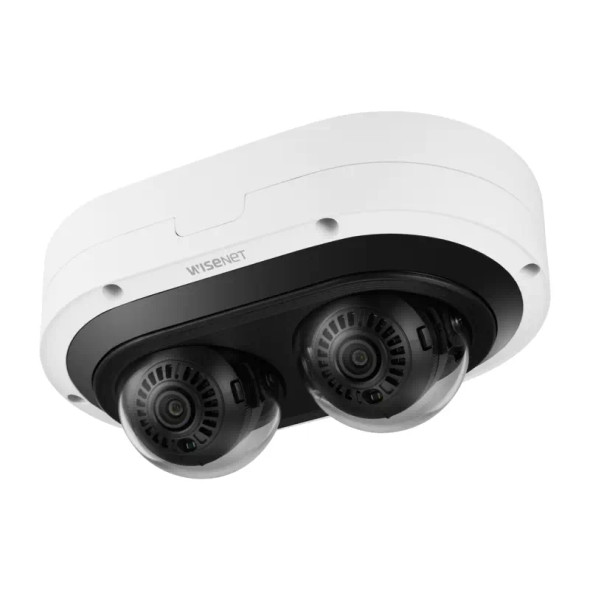
Samsung Hanwha PNM-7082RVD 2x2MP Night Vision Outdoor Multi-sensor IP Security Camera, 2x Optical Zoom
Brand: Hanwha Vision
Part Number: PNM-7082RVD$1,400.00$1,146.94- Compression : H.265, H.264, MJPEG,
- Field of View (Horizontal) : 56°Field of View 107°Field of View
- Max. FPS and Resolution : 30fps at 1080P
- Lens Type : Motorized (Automatic Zoom) Lens
- Lens Size : 3~6mm Lens
- Sensor Type : CMOS
- Sensor Size : 1/2.8" Sensor
- Protection Code : IP66 IP67 NEMA 4X IK10
- Color : White
- Material : Aluminum Hard-coated poly-carbonate
- Environmental : Outdoor
- Aperture : F2.2 F3.1
$1,400.00$1,146.94 -
New Product!
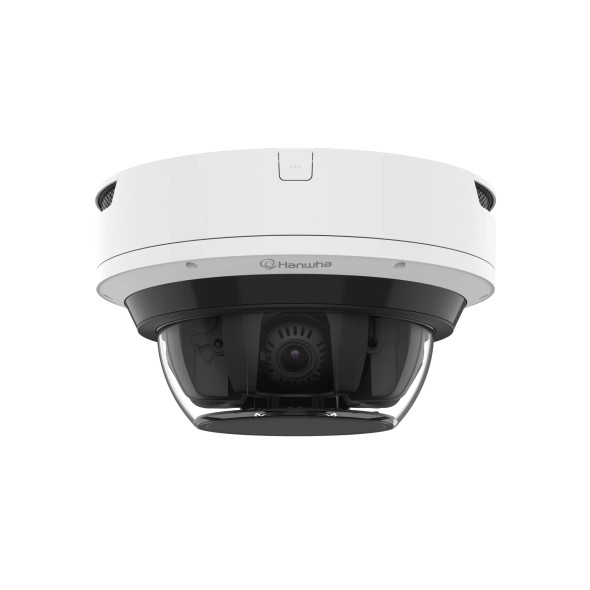
Hanwha Vision PNM-C32084RQZ-8XE4T-W 4x8MP Outdoor AI Multi-Sensor Network IP Security Camera with 4.38-9.33mm Lens, 2.13x Optical Zoom, Built-In IR and Embedded WAVE VMS
Brand: Hanwha Vision
Part Number: PNM-C32084RQZ-8XE4T-W$9,690.00$7,096.21- Lens Type : Motorized (Automatic Zoom) Lens
- Lens Size : 4.38~9.33mm Lens
- Sensor Type : CMOS
- Sensor Size : 1/1.8" Sensor
- Protection Code : IP66 IK10
$9,690.00$7,096.21 -
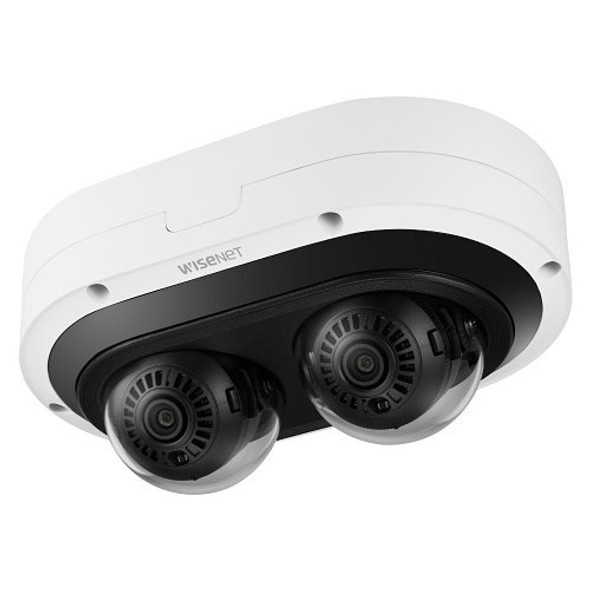
Samsung Hanwha PNM-7082RVD/KEX P Series 2x 2MP Outdoor Night Vision Multi-sensor Dome IP Security Camera, 3-6mm Motorized Varifocal Lens, White, TAA Compliant
Brand: Hanwha Vision
Part Number: PNM-7082RVD/KEX$1,400.00$1,085.56- Lens Type : Motorized (Automatic Zoom) Lens
- Environmental : Outdoor
$1,400.00$1,085.56 -
New Product!

Hanwha Vision PNM-C32084RQZ-8XE256G-LU 4x8MP Outdoor AI Multi-Sensor Network IP Security Camera with 4.38-9.33mm Lens, 2.13x Optical Zoom, Built-In IR and Lumeo Analytics
Brand: Hanwha Vision
Part Number: PNM-C32084RQZ-8XE256G-LU$9,175.00$6,719.07- Lens Type : Motorized (Automatic Zoom) Lens
- Lens Size : 4.38~9.33mm Lens
- Sensor Type : CMOS
- Sensor Size : 1/1.8" Sensor
- Protection Code : IP66 IK10
$9,175.00$6,719.07
